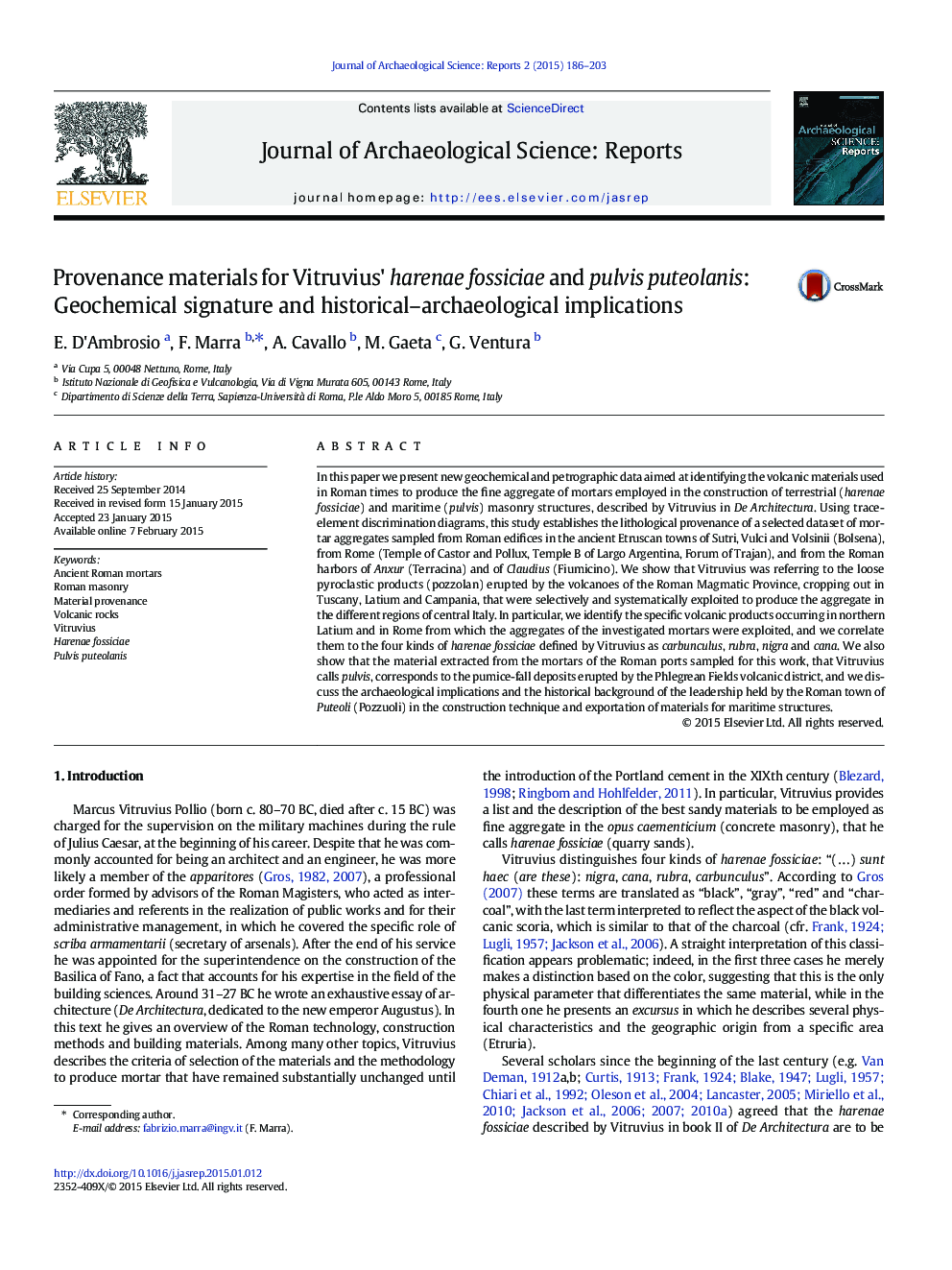| Article ID | Journal | Published Year | Pages | File Type |
|---|---|---|---|---|
| 7446133 | Journal of Archaeological Science: Reports | 2015 | 18 Pages |
Abstract
In this paper we present new geochemical and petrographic data aimed at identifying the volcanic materials used in Roman times to produce the fine aggregate of mortars employed in the construction of terrestrial (harenae fossiciae) and maritime (pulvis) masonry structures, described by Vitruvius in De Architectura. Using trace-element discrimination diagrams, this study establishes the lithological provenance of a selected dataset of mortar aggregates sampled from Roman edifices in the ancient Etruscan towns of Sutri, Vulci and Volsinii (Bolsena), from Rome (Temple of Castor and Pollux, Temple B of Largo Argentina, Forum of Trajan), and from the Roman harbors of Anxur (Terracina) and of Claudius (Fiumicino). We show that Vitruvius was referring to the loose pyroclastic products (pozzolan) erupted by the volcanoes of the Roman Magmatic Province, cropping out in Tuscany, Latium and Campania, that were selectively and systematically exploited to produce the aggregate in the different regions of central Italy. In particular, we identify the specific volcanic products occurring in northern Latium and in Rome from which the aggregates of the investigated mortars were exploited, and we correlate them to the four kinds of harenae fossiciae defined by Vitruvius as carbunculus, rubra, nigra and cana. We also show that the material extracted from the mortars of the Roman ports sampled for this work, that Vitruvius calls pulvis, corresponds to the pumice-fall deposits erupted by the Phlegrean Fields volcanic district, and we discuss the archaeological implications and the historical background of the leadership held by the Roman town of Puteoli (Pozzuoli) in the construction technique and exportation of materials for maritime structures.
Keywords
Related Topics
Social Sciences and Humanities
Arts and Humanities
History
Authors
E. D'Ambrosio, F. Marra, A. Cavallo, M. Gaeta, G. Ventura,
